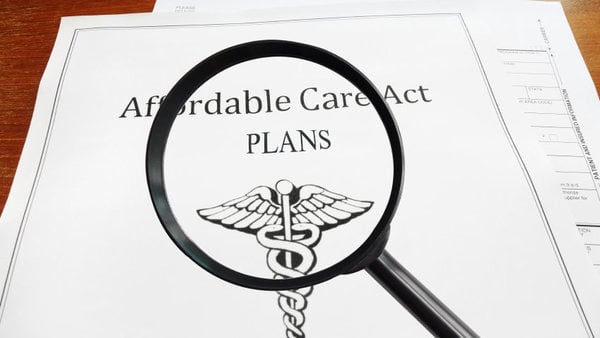 Next year'sprice cuts help to correct the huge increases that jittery insurersset for 2018 plans to protect themselves from anticipatedRepublican assaults on the markets. (Photo: Getty)
Next year'sprice cuts help to correct the huge increases that jittery insurersset for 2018 plans to protect themselves from anticipatedRepublican assaults on the markets. (Photo: Getty)
In recent years, places such as Memphis and Phoenix had witheredinto health insurance wastelands as insurers fled and premiums skyrocketed in the insurancemarketplaces set up by the Affordable Care Act. But today, as inmany parts of the country, these two cities are experiencingsomething unprecedented: Premiums are sinking and choices aresprouting.
|In the newly competitive market in Memphis, the cheapestmidlevel “silver” plan for next year will cost $498 a month for a40-year-old, a 17 percent decrease. Four insurers are sellingpolicies in Phoenix, which then-presidential candidate Donald Trumphighlighted in 2016 as proof of “the madness of Obamacare” as allbut one insurer left the region.
|Related: 7 things to know as ACA open enrollment kicksoff
|Janice Johnson, a 63-year-old retiree in Arizona's MaricopaCounty, which includes Phoenix, said her premium for ahigh-deductible bronze plan will be $207 instead of $270 becauseshe is switching carriers.
|“When you're on a fixed income, that makes a difference,” saidJohnson, who receives a government subsidy to help cover herpremium. “I'll know more than a year from now if I'm going to stickwith this company, but I'm going to give them a chance, and I'mpretty excited by that.”
|Across all 50 states, premiums for the average “benchmark”silver plan, which the government uses to set subsidies, aredropping nearly 1 percent. And more than half of the counties thatuse the federal healthcare.gov exchange are experiencing an average10 percent price decrease for their cheapest plan.
|In most places, the declines are not enough to erase the pricehikes that have accrued since the creation in 2014 of the healthcare exchanges for people who don't get insurance through anemployer or the government.
|Instead, experts said, next year's price cuts help to correctthe huge increases that jittery insurers set for 2018 plans toprotect themselves from anticipated Republican assaults on themarkets. Although Congress came up one vote shy of repealing thelaw, Trump and Republicans in Congress did strip away structuralunderpinnings that pushed customers to buy plans and helpedinsurers pay for some of their low-income customers' copayments anddeductibles. Insurers responded with 32 percent average increases.
|“Insurers overshot last year,” said Chris Sloan, a director atAvalere, a health care consulting company in Washington, D.C. “Weare nowhere close to erasing that increase. This is still a reallyexpensive market with poor benefits when it comes to deductiblesand cost.”
|For 2019, the average benchmark silver premium will be 75percent higher than it was in 2014, according to data from theKaiser Family Foundation. (Kaiser Health News is an editoriallyindependent program of the foundation.)
|When Republicans failed to kill the health law last year, theyinadvertently may have made it stronger. Insurers banked hefty profits this year, and new companies are movingin.
|All these factors were especially influential in Tennessee,where the average benchmark premium is dropping 26 percent,according to a government analysis. That is more than in any other state.
|In 2018, 78 of 95 Tennessee counties had just one insurer. Thatmonopoly allowed the insurer to set the prices of its plans withoutfear of competition, said David Anderson, a researcher at theDuke-Margolis Center for Health Policy in Durham, N.C. “They weremassively overpriced,” he said.
|But for the coming year, 49 Tennessee counties will have morethan one insurer, with a few — like Shelby County, where Memphis islocated — having four companies competing. There, Cigna dropped theprice of its lowest-cost silver plan by 15 percent. Nonetheless, itwas underbid by Ambetter of Tennessee, which is owned by themanaged-care insurer Centene Corp.
|“We're finally at the point where the market is stabilized,”said Bobby Huffaker, the CEO of American Exchange, an insurancebrokerage firm based in Tennessee. “From the beginning, everyunderwriter, and the people who were the architects, they knew itwould take several years for the market to mature.”
|Still, the cheapest Memphis silver premium is nearly three timeswhat it was in 2014, the first year of the marketplaces. A familyof four with 40-year-old parents will be paying $19,119 for all ofnext year unless they qualify for a government subsidy.
|“The unsubsidized are leaving,” said Sabrina Corlette, aprofessor at Georgetown University's Health Policy Institute. “Theyare finding these premiums unaffordable.”
|The landscape in Phoenix is greatly improved from when Trumpvisited after the federal government announced a 116 percentpremium increase for 2017, as the number of insurers dropped fromeight to one.
|But now, three new insurers are entering Maricopa County.Ambetter, the only insurer this year, dropped its lowest price fora silver plan for next year by 12 percent and still offers thecheapest such plan.
|Ambetter's plan is still 114 percent above the least expensivesilver plan in the first year of the exchanges. And none of theinsurers are offering as broad and flexible a choice of doctors andhospitals as consumers had back then, said Michael Malasnik, alocal broker.
|Since the start of the exchanges, he said, insurers have “raisedtheir rates by multiples, and they've figured out you have to be avery narrow network.”
|Each plan for 2019 contains trade-offs. He said only BrightHealth's plan includes Phoenix Children's Hospital. Ambetter's planincludes the most popular hospital and doctor groups, but they arenot as conveniently located for people living in the southeasterncorner of the county, making other insurers' plans appealing.
|“Geography is the name of the game this year,” Malasniksaid.
|Theresa Flood, a preschool teacher who lives outside Phoenix,said none of the plans she considered accepted her doctors, whoinclude a specialist for her spine problems — she has had foursurgeries — and a neurologist who monitors a cyst and benign tumorin her brain.
|“I have to establish care with a whole new spine doctor andestablish care with a whole new neurologist if I want to follow upon these things,” Flood, 59, said. “You're going from establishedcare to who in the heck am I going to see?”
|The plan she chose would have been too expensive except that sheand her husband, John, a pastor, qualified for a $1,263-a-monthsubsidy that will drop the cost to $207 a month. That bronze planfrom Ambetter carries a $6,550-per-person deductible, so sheexpects she'll still have to pay for her doctors on her own unlessshe needs extensive medical attention.
|“It's gone from being able to have a plan that you could sort ofafford and got some benefit from, to putting up with what you canafford and hoping nothing happens that you actually have to useyour insurance,” she said. “At this point, I'll take what I canget.”
|Kaiser HealthNews (KHN) is a national health policy news service. It is aneditorially independent program of the Henry J. Kaiser Family Foundation whichis not affiliated with Kaiser Permanente.
|Read more:
Complete your profile to continue reading and get FREE access to BenefitsPRO, part of your ALM digital membership.
Your access to unlimited BenefitsPRO content isn’t changing.
Once you are an ALM digital member, you’ll receive:
- Critical BenefitsPRO information including cutting edge post-reform success strategies, access to educational webcasts and videos, resources from industry leaders, and informative Newsletters.
- Exclusive discounts on ALM, BenefitsPRO magazine and BenefitsPRO.com events
- Access to other award-winning ALM websites including ThinkAdvisor.com and Law.com
Already have an account? Sign In
© 2024 ALM Global, LLC, All Rights Reserved. Request academic re-use from www.copyright.com. All other uses, submit a request to [email protected]. For more information visit Asset & Logo Licensing.








